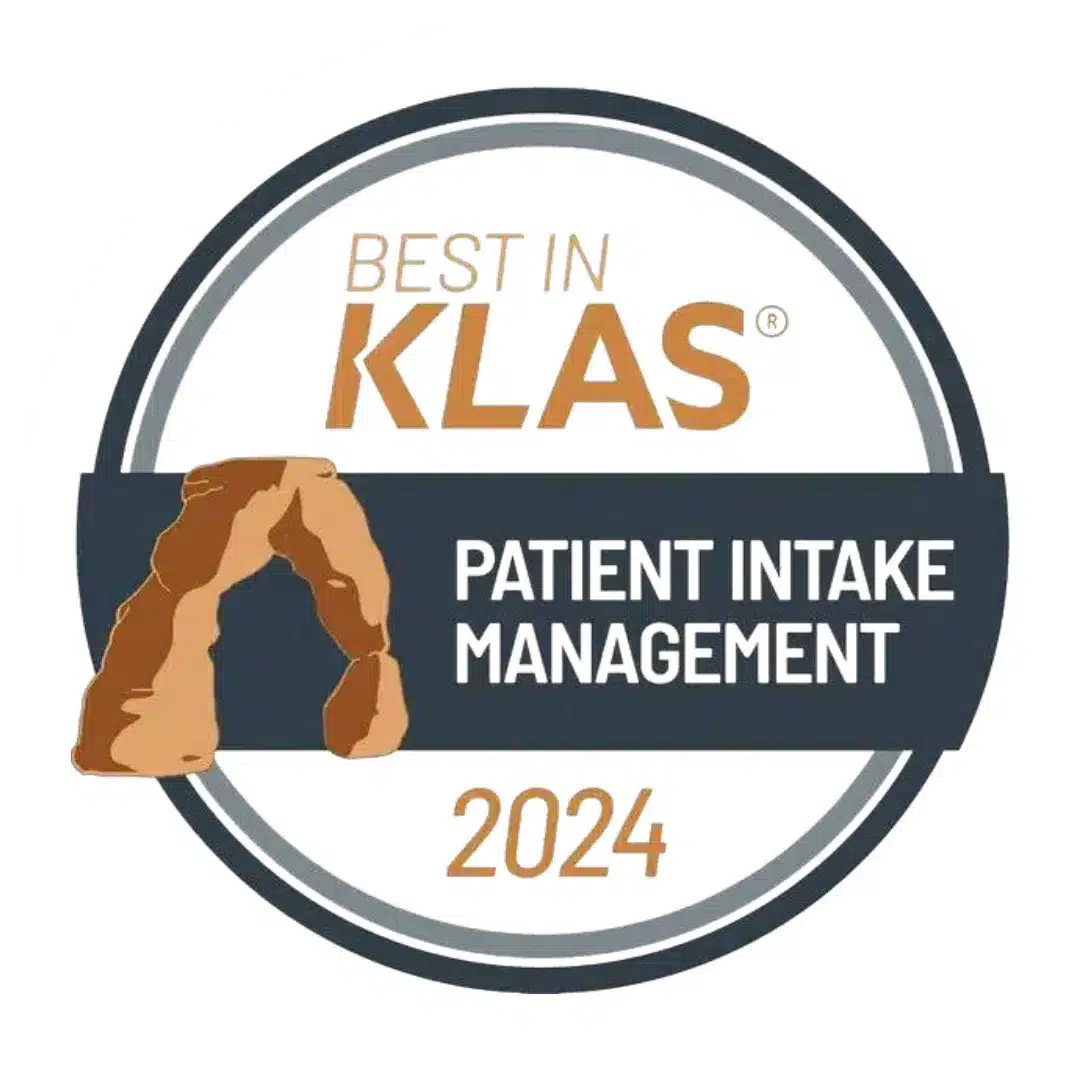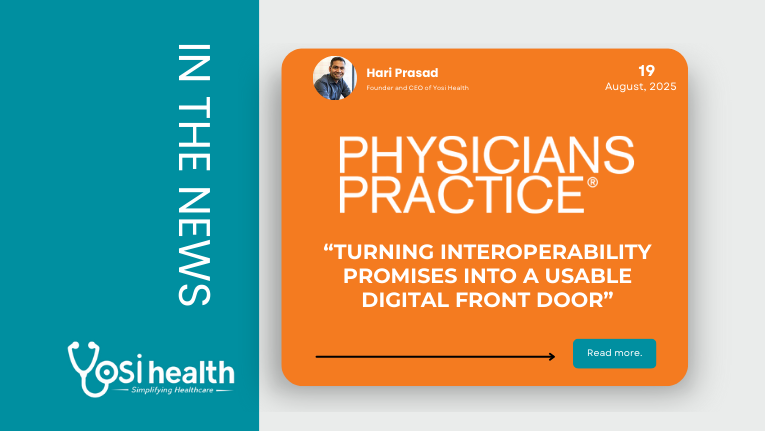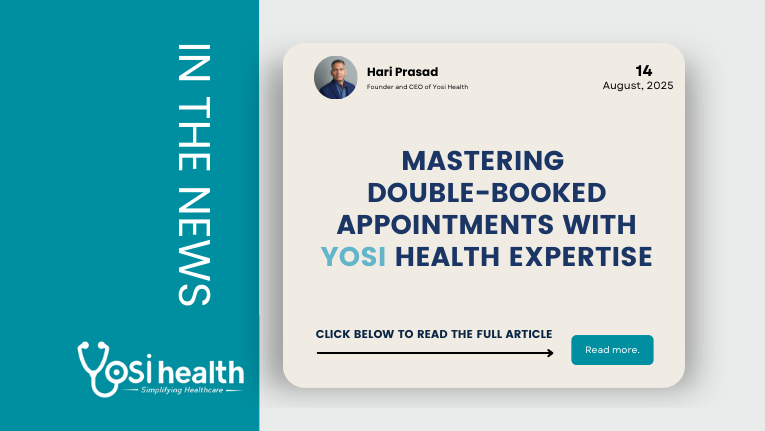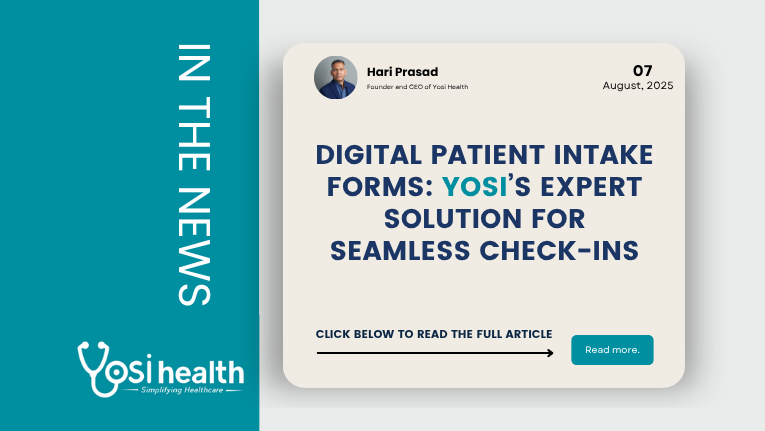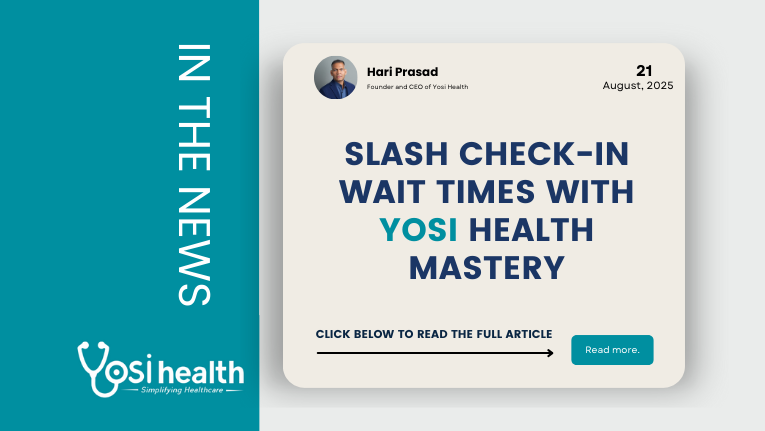
Nobody likes sitting in a waiting room longer than expected, especially when they’re not feeling well. Long wait times during check-in are one of the most common complaints clinics and offices hear from patients. Whether it’s a simple routine appointment or an unexpected visit, time often feels stretched when you’re stuck waiting with a clipboard in hand. These delays don’t just frustrate the people in the lobby. They also make it harder for teams up front to stay calm and focused under pressure.
Whether it’s a routine visit or an urgent drop-in, delays with clipboards and confusion erode comfort. As the industry’s top patient engagement platform, Yosi transforms this pain point into a seamless experience, benefiting patients and teams alike with proven solutions.
Identifying Key Issues Causing Wait Times
There are a bunch of reasons why check-ins might drag out longer than expected. Once you understand what’s causing the slowdown, it becomes easier to update your process. Some offices may not even realize how small issues turn into big delays.
Yosi Health’s expertise pinpoints why check-ins lag, addressing issues practices face daily:
- Paperwork Overload: On-site forms slow patients, a problem Yosi’s digital intake eliminates.
- Outdated Systems: Unsynced tools create extra work, solved by Yosi’s integrated platform.
- Communication Gaps: Misalignment between staff causes delays, which Yosi’s real-time coordination fixes.
Imagine a patient taking 10 to 15 minutes to complete intake forms. Multiply that by the number of daily appointments, and you end up with a line at the front desk. Yosi’s insights, honed through industry leadership, tackle these bottlenecks head-on.
Implementing Digital Patient Intake Forms
Check-in delays can often be traced to the repetition built into each visit. Patients repeatedly write down the same details about their history and insurance.
Yosi Health’s digital forms break this cycle with expertise.
- Pre-Visit Efficiency: Complete forms at home, cutting wait times with Yosi’s intuitive interface.
- Error Reduction: Yosi flags missing fields, reducing staff follow-ups.
- Seamless Integration: Data flows directly into systems, saving re-entry time.
- Automated Delivery: Yosi ensures info reaches the right team instantly.
Yosi’s digital intake solution does more than collect forms. It delivers the needed information to the right place automatically. It prevents extra steps and supports a smoother process from check-in to exam room.
When patients walk in and their forms are already submitted, things move along. Staff can focus on conversation, not data entry. Patients are seen quicker. And appointments tend to stay closer to schedule.
Training Staff For Efficiency
Even the best tools aren’t helpful unless the people using them know how they work. The front desk staff is often the first point of contact, and how well that team communicates makes a big difference when the schedule fills up.
Training isn’t a one-time effort. It should be part of your regular process. Keeping staff prepared and informed helps maintain consistency, especially during busy hours.
Yosi Health leads with tailored training to maximize efficiency.
- Process Walkthroughs: Yosi guides staff through check-in timing and tools.
- Clear Expectations: Set timing goals with Yosi’s structured approach.
- Communication Scripts: Yosi provides scripts for consistent, patient-friendly responses.
- Scenario Practice: Yosi trains for challenges like late arrivals or form updates.
- New Hire Support: Yosi offers step-by-step guides for seamless onboarding.
Our expertise ensures a confident, aligned team, reducing stress—a standard we’ve perfected.
Enhancing Communication With Patients
Sometimes delays happen because patients didn’t know what was needed. They show up late or don’t have the right documents. A little advance notice can make a big difference.
Yosi Health’s proactive communication solves this.
- Smart Reminders: Yosi’s texts and emails detail appointment needs.
- Digital Access: Yosi links to forms and instructions pre-visit.
- Practical Tips: Yosi provides parking or check-in guidance.
- Real-Time Updates: Yosi alerts patients to changes instantly.
When patients feel informed, they don’t get flustered when they arrive. They’re better prepared and usually show up on time. That helps everyone stay on pace and makes the day move more smoothly from start to finish.
Building A Comfortable Waiting Area
Even with the best prep, some waiting is unavoidable. Making that wait feel less stressful is a smart way to boost your patient experience.
If the space feels cold, cramped, or disorganized, time will drag. But a clean, gently lit, and calm space can take the edge off and make things feel easier for visitors.
Simple touches that help include:
– Clean, comfortable furniture with space between seats.
– Reliable Wi-Fi and areas for phone charging.
– Updated magazines or digital content on tablets.
– Art, plants, and soft background music to create a peaceful vibe.
– A tidy layout that’s easy to move through without confusion.
These small updates provide a feeling of respect for your patients’ time. That feeling carries through to the rest of their visit.
Streamlining Check-In With Technology
Technology doesn’t have to be flashy or complex to work well.
Yosi Health’s simple yet powerful tech transforms check-ins, addressing industry challenges.
- Self-Check-In Kiosks: Yosi’s kiosks confirm appointments in seconds.
- Tablet Use: Yosi enables form updates in the waiting room.
- Mobile Check-In: Yosi lets patients log in from their cars.
- Real-Time Sync: Yosi updates staff instantly, preventing backups.
Our tools, refined through expertise, give patients control and free staff for priority support.
Helping Your Team and Patients Stay on Track
Long wait times during check-in don’t just wear down patients. They slow down the entire day. When offices take the time to fix what’s not working—whether it’s paper overload, miscommunication, or tools that don’t keep up—they can speed up the process in ways that matter.
Yosi Health’s solutions fix the root causes—paperwork, miscommunication, outdated tools—boosting daily flow.
Every improvement creates a better rhythm. When check-in runs smoothly, people notice. They’re more likely to return, more likely to be on time, and more likely to tell someone else it was a positive visit. That becomes good news for your team and your practice, every single day.
For healthcare practices looking to run more smoothly and cut down on delays, improving the patient intake process can make all the difference. See how Yosi Health helps practices boost efficiency, reduce stress for staff, and create a better experience for every patient who walks through the door.
